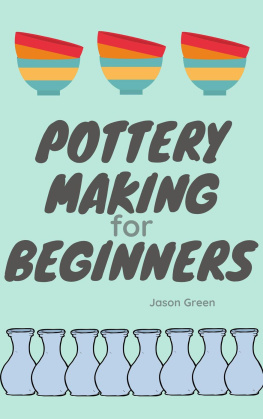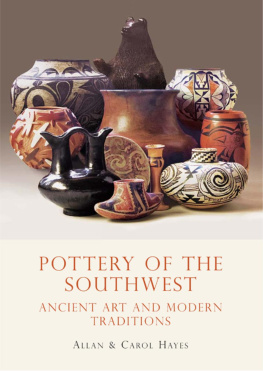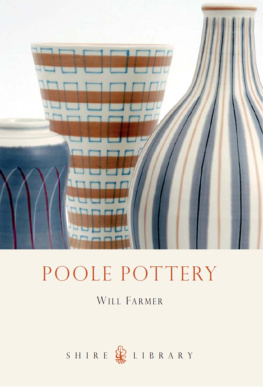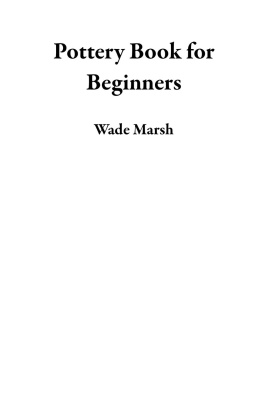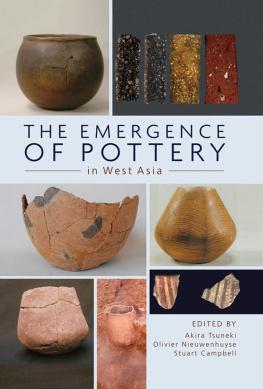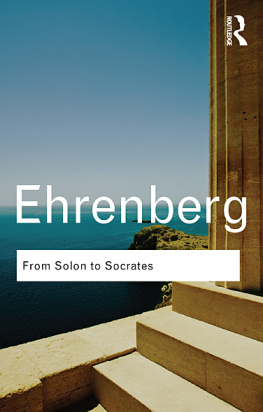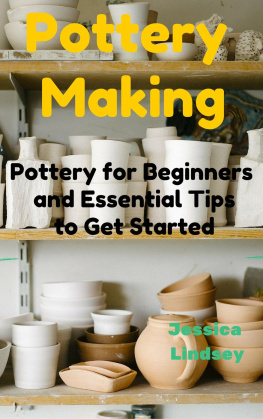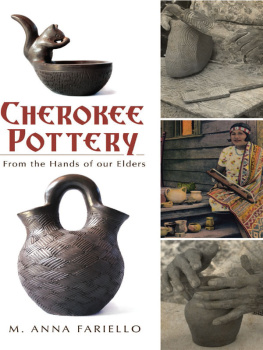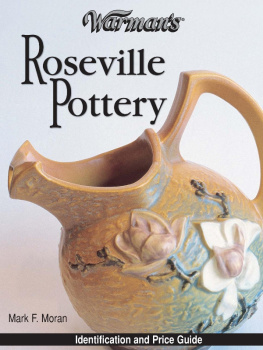POTTERY AND THE ARCHAEOLOGIST
POTTERY AND THE ARCHAEOLOGIST
edited by Martin Millett
University College London Institute of Archaeology Publications, Vol. 18
Occasional Publication No. 4
Originally published by University College London Institute of Archaeology
First published 2009 by Left Coast Press, Inc.
Published 2016 by Routledge
2 Park Square, Milton Park, Abingdon, Oxon OX14 4RN
711 Third Avenue, New York, NY 10017, USA
Routledge is an imprint of the Taylor & Francis Group, an informa business
Copyright 1979 The Institute of Archaeology
All rights reserved. No part of this book may be reprinted or reproduced or utilised in any form or by any electronic, mechanical, or other means, now known or hereafter invented, including photocopying and recording, or in any information storage or retrieval system, without permission in writing from the publishers.
Notice:
Product or corporate names may be trademarks or registered trademarks, and are used only for identification and explanation without intent to infringe.
Library of Congress Cataloguing-in-Publication Data available from the publisher
ISBN 978-0-905853-08-6 paperback
LIST OF CONTRIBUTORS
Philip Crummy | Colchester Archaeological Unit, Colchester, Essex |
Ian Hodder | Department of Archaeology, University of Cambridge |
R. F. J. Jones | School of Archaeological Sciences, University of Bradford |
Danny Miller | Solomon Islands Museum, Honiara, Solomon Islands |
Martin Millett | Institute of Archaeology, University of Oxford |
Clive Orton | Department of Urban Archaeology, Museum of London |
Richard Reece | Institute of Archaeology, University of London |
Matthew Spriggs | Department of Prehistory, Australian National University, Canberra |
Roger Terry | c/o Colchester Archaeological Unit, Colchester, Essex |
D. F. Williams | Department of Archaeology, University of Southampton |
To most archaeologists their pottery is as a mountain, vast and unassailable: a challenge to be conquered. This causes a fixation about the pottery, it has to be overcome simply because it is there. The vast literature on pottery reflects this situation, with a tendency for the vast masses of data to be presented often in an ill-digested and ill-conceived form simply because the material exists. Once presented, the material is all too often of little use to other scholars; instead of digesting the evidence from the first campaign, the pottery expert is out seeking another mountain to conquer.
An alternative approach to the mountain is that of the geologist, who attempts to understand its form, structure and context: hence its nature. This volume is for the geologist, not the mountaineer.
These papers are the result of a conference held at the Institute of Archaeology, London, in May 1977 by the University of London Archaeological Society to celebrate the 40th anniversary of the opening of the Institute. Our aim was to present a series of papers on the more universally applicable aspects of work on pottery. All but two of the papers presented that day are published here, the exceptions being the papers by Dr Fulford (to be published in the Carthage reports) and Katherine Barclay. In place of these we include a paper by Dr Williams on Petrology (a subject missing on the conference programme) and a short note on the problems of quantification.
I must take the responsibility for the fact that there is a slight Roman and British bias to some of the papers, and indeed the conference as a whole, but would plead that the papers are fundamentally theoretical in intent, if not in application.
The conference, and this volume, would not have been possible without the efforts of the other members of our committee for 19767, in particular Simon Keay, who dealt with numerous postal applications for seats, and Jane Wadham, who controlled the financial problems and made the domestic arrangements. Finally I should like to thank Dr Nandris and Dr Reece, who chaired the two sessions, and the Director of the Institute, Professor J. D. Evans, who not only offered the Institute as a place to meet, but also accepted this volume as an Institute Occasional Publication, making its publication possible.
Martin Millett
November 1977
CONTENTS
by M. MILLETT
by R. F. J. JONES
by I. HODDER
by M. SPRIGGS AND D. MILLER
by M. MILLETT
by P. CRUMMY AND R. TERRY
by C. ORTON
by D. F. WILLIAMS
by M. MILLETT
by R. REECE
LIST OF FIGURES AND PLATES
R. F. J. Jones
Why does pottery enjoy such a pre-eminent position in archaeological studies? The prime reason likely to be offered is simply because its there. Of all artifacts pottery is the most easily available to the archaeologist, for all the reasons put to every new student of the subject. It does break very easily, it will not be mended very satisfactorily, but in fragments it is virtually indestructible. Thus it is there to be found, often in embarrassing quantities. However, this omnipresence in itself does not seem adequately to justify the constructions in social and historical terms which archaeologists continue to seek in their pottery evidence. In Britain alone, where our quantities of pottery are relatively manageable by some standards, we find a long line of archaeological cultures often still basically defined by ceramics, from Fengate ware, through Beakers and Food Vessels, to Belgic beakers. Beyond that, in the Roman period pottery studies have reached a refinement hardly glimpsed elsewhere. Many wares can confidently be traced back to their place and period of production. Nevertheless, even here, many questions of fundamental importance to our archaeological interpretations remain too often unconsidered. It is to these questions in the Roman period that the remarks below largely refer. I wish to examine how pottery has been used, especially for dating, which brings us to the conundrum of the relationship between written history and material remains. Some progress with this problem may be found in the study of pottery more for its own information, using various new approaches.
It may help us to understand what we derive from pottery finds at present if we were to imagine what would be lost if we threw away most of them, following the examples of many of our antiquarian predecessors by keeping only the pretty pieces for display. Those in museums cursed with the long-term storage of finds from modern excavations might well secretly wish for such a policy anyway. Indeed who knows what future financial stringencies will force upon us? What I suggest now is that the pottery sherds should be thrown on the excavation spoil-heap with no more than a cursory glance. Complete or almost complete vessels would be retained, so we should still know that pottery was being used and what the forms of the vessels were like. The main distress caused by such actions would be felt by those desperate to find dating evidence. Dating is the main task the Romano-British archaeologist asks of his pottery. The way in which this dating is constructed has been clearly explained by Brian Hartley (1969) in relation to Samian ware. He shows how dates for types of vessels are drawn from numerous examples of dated finds. The strength of the structure depends upon the number of confirmatory examples which form its foundation.






